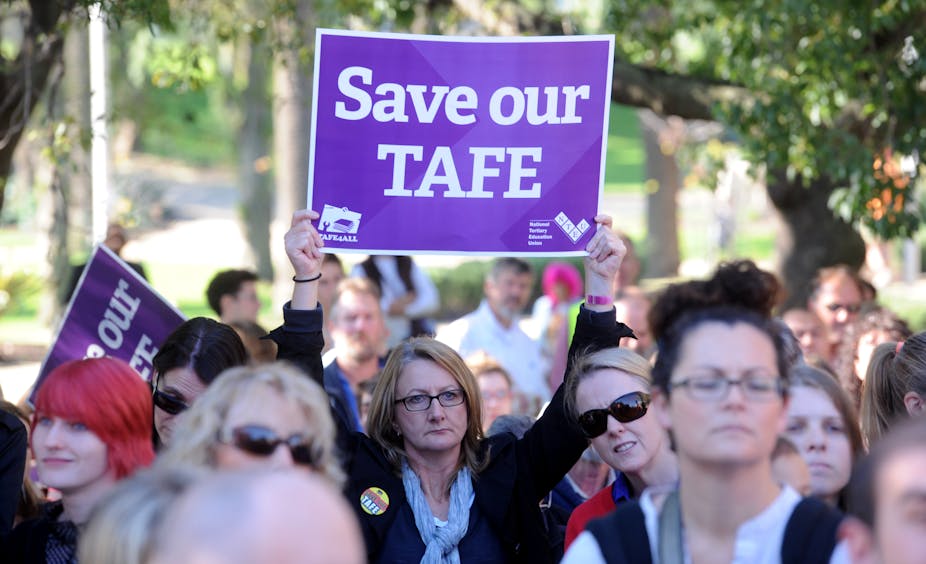State governments arew wrecking the TAFE system and cuts to TAFE institutes in regional areas will have major social and economic consequences say education experts.
“They’re cutting out rungs in the education ladder,” said Leesa Wheelahan, associate professor at Melbourne University’s LH Martin Institute.
“The government is positioning TAFE as being just another provider. TAFE is more than that, it’s part of the economic and social fabric of local communities,” Professor Wheelahan said.
According to a cabinet-in-confidence document leaked to the media last night, widespread cuts to staff numbers, course offerings and spending are on the way in Victoria.
The report, which details “transition plans” from Victorian TAFEs, shows regional institutes will be among the hardest hit.
It comes after the Ballieu government cut $300 million from TAFE in the May budget, NSW flagged 800 TAFE job cuts, and Queensland’s Newman government flagged $80 million in cuts to TAFE in the Queensland budget.
“TAFEs are an important part of regional Australia and country areas. The loss of jobs and access to courses will be a concern, but there’s a much bigger concern,” said Stephen Dinham, chair of Teacher Education and director of Learning and Teaching at University of Melbourne.
“Every year we can keep people in education reduces things like anti-social behaviour and the crime rate,” Dr Dinham said.
“There are a number of US states that make their predictions for prison cells needed on the basis of the high school dropout rate.”
TAFE has historically always played a “second chance” role for people from disadvantaged backgrounds, said Professor Wheelahan.
The NSW and Victorian governments have both flagged removing non-performing courses, with the Victorian cabinet document highlighting several TAFEs plan to cut hospitality courses.
Course reductions come despite the OECD this week reporting as many as 85% of 25-64 year-old Australians who have attained vocational education were employed in 2010 – the second-highest level among OECD countries.
“Hospitality is one where students from a disadvantaged background use it as a stepping stone,” Professor Wheelahan said.
She said the funding of private vocational education led to a flood of poor courses in hospitality and tourism.
“The government’s response has been to cut back subsidies so institutions that are serious about education can’t deliver it at the rates it’s being funded.”
Professor Dinham said it was important to remember the benefits of having an educated population, particularly in low socio-economic and regional areas.
The cuts come as the government has released a report recommending the university sector do more to close the gap in the representation of indigenous students, aiming to grow it from 1.09% to 2.2%.
“Were seeing money coming out of technical and further education at the same time as people are promising new superhighways and prisons. It’s a matter of working out our priorities,” Professor Dinham said.

